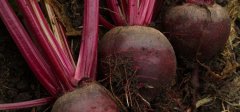What are the main parasitic plants of slugs and snails? How to prevent and manage slugs and snails
Slugs, this kind of pest, do you know how to walk? This kind of pest is mainly parasitic on those plants. What are the hazards? Let's get to know it together.
Host plants: about crops: beans, lettuce, cabbage, cabbage, tomatoes and many other garden plants. Unlike most insects, slugs and snails can digest tissue from various plants.
Where to find: several species inhabit gardens around the world, especially in cool, humid climates.
Caption: slugs move on moist leaves, mulches and soil, and densely planted gardens are favorite habitats. Slugs can be as small as peas or as big as thumbs, leaving a trace of mucus as they move. They lay eggs in soil and wet compost, and their numbers would increase rapidly under ideal conditions.
Damage: slugs and snails have smooth-edged holes when chewing in leaves and fruits, and small seedlings can be completely consumed. Snails eat most intensely at night or during cloudy and rainy weather.
Prevention problem: put on rubber gloves, pick up slugs with your hands, and drown them in a bucket of soapy water. Small plates can also be covered by digging holes 4 inches (10 cm) wide and 6 inches (15 cm) deep to monitor slug activity. If you see many slugs in the hole after three days, please take other control measures. In areas with long-term persistent problems, as long as it is rainy in early summer, available habitats can be reduced by delayed mulching. Natural enemies, including frogs, toads, snakes, turtles, ground beetles, firefly larvae, songbirds, chickens and ducks eat slugs and their eggs.
Manage outbreaks:
By placing an inch of beer in a small open container and sinking it into the edge of the soil or mulch, feces can be easily introduced into the trap. Small slu can that actively feeds plants can be controlled by a caffeine spray made of cold coffee or dissolved caffeine tablets, but the spray must wet the feeding slug to be effective. Despite preventive measures, iron phosphate bullet baits are considered acceptable according to organic standards in cases where slu was is out of control.

- Prev

Introduction to the planting methods and growth conditions of Swiss sugar beet, and how to sow and plant Swiss sugar beet.
Swiss beet is easy to grow, which makes it an ideal choice for beginner gardeners, who are looking for an effortless crop. Beets have wide, thick stems and are available in a variety of colors: bright white, yellowish, and even lipstick pink!
- Next

How to sow beet seeds? What soil is better for beet planting and how to harvest sugar beet?
Sugar beets are a good crop-flexible to soil types, undemanding and unlikable. More importantly, you can harvest two different delicious crops from the same plant, making it a vegetable worth making room in your garden.
Related
- A course of planting techniques and methods on how to grow carrots
- How to plant the latest tulips?
- Is it better to pick tea in the morning or in the afternoon? When is the best time for tea to be picked? what is the third or fifth tea?
- Launch Yuanxiao Happy combination Haocha + Tea Yuan healthy Taste
- Penghu Tourism "Fireworks 20 Parade with You"
- 2022 West Lake Happiness holds "Digital Revitalization Voucher" and draws iphone13 and laptop.
- Banqiao Fuzhou social houses are designed to change start-up combined with police elimination to create a safe and livable environment
- The convenient measure of "mechanical weeding" in Xinbei has been abused and the Agriculture Bureau has imposed heavy penalties on the illegal land consolidation.
- Changgeng University Joins Hands with Four Memory Factories to Rescue Memory Talent Shortage
- The list of Taiwan's top 100 MVP managers is listed by the Director-General of the Farmers' Association of Sanxia District.

